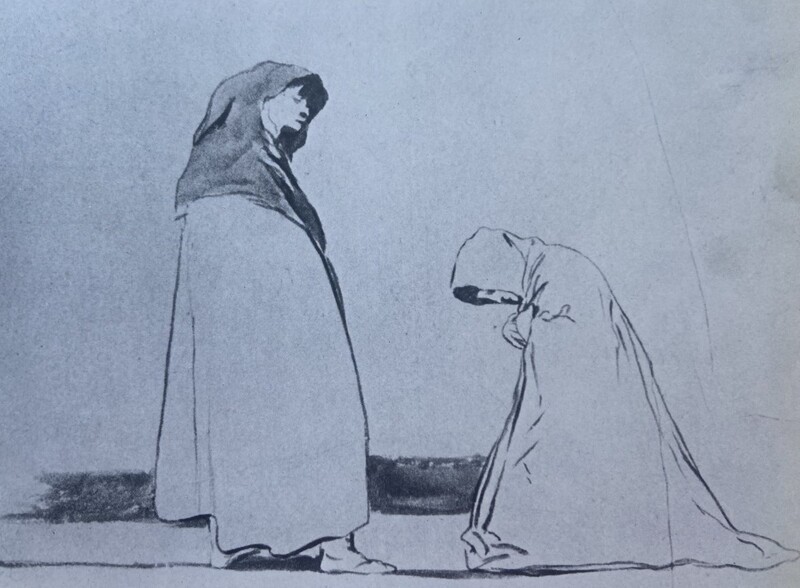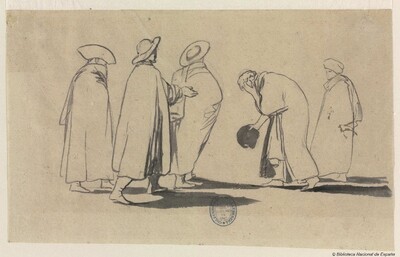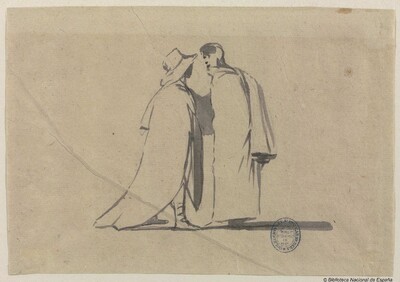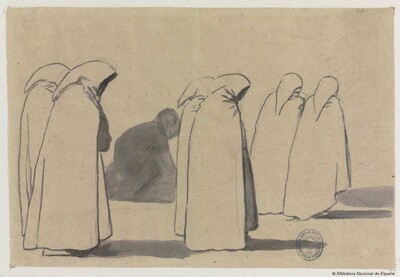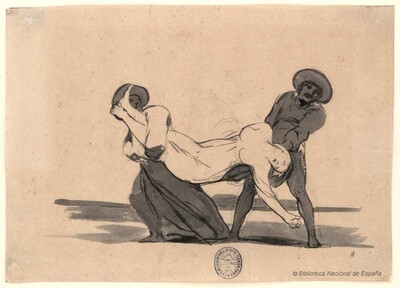- Cronología
- Ca. 1795
- Ubicación
- Private collection, París, France
- Dimensiones
- 170 x 225 mm
- Técnica y soporte
- Reconocimiento de la autoría de Goya
- Documented work
- Ficha: realización/revisión
- 18 Aug 2021 / 25 Apr 2023
It is thought that the drawing may have belonged to Goya's friend Juan Agustín Ceán Bermúdez (1749-1829). In the second half of the 19th century it was in the Parisian collection of Paul Lefort, who sold it at the end of January 1869 at public auction to Etienne Arago, who in turn sold it again, also at public auction, at the beginning of February 1872. It subsequently belonged to Camille Groult. It was sold on 24 March 1955 at the Galerie Charpentier in Paris. In the mid-1970s it belonged to a private Parisian collection.
See Five figures of men.
According to Pierre Gassier and Juliet Wilson-Bareau, this drawing was inspired by two figures in John Flaxman's compositions intended to illustrate the Purgatorio of Dante's Divine Comedy. On the left, a male figure dressed in a long hooded cloak resembling a monastic habit seems to be listening to the prayers of a female figure covered in a long cloak and kneeling and bowing before him in great submission. This female figure, because of her particular beauty, gave the drawing its title as early as the 1860s, when it belonged to Paul Lefort. In turn, Pierre Gassier relates this scene to two drawings from Goya's Sketchbook E, Penitence and The Novice, due to the parallels between the figures depicted in them and those in the present scene.
The drawing, of great subtlety, is characterised by its masterly economy of expressive resources.
-
Vie et ouvre de Francisco de GoyaParísOffice du livre1970p. 195, cat. 764
-
Dibujos de Goya, 2 volsBarcelonaNoguer1975p. 517, cat. 344
